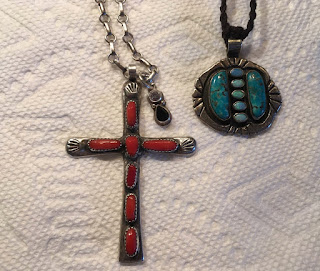It’s always interesting how things in the antiques and arts markets travel. Over 35 years of trading, I’ve lost count of the things I’ve sold in Texas and then come across in someone’s else shop or show booth in the states surrounding Texas. Things in the market routinely travel much farther, of course. I did not sell the pre-Civil War ovoid-shaped stoneware storage jar pictured here. The man I bought it from told me that he had gotten it at an estate sale in the East Mountains of greater Albuquerque. According to him, the people were from Dallas. Could be, and could be just a story. Too often, attributions are misguided, misinformed, or outright untruths. All part of the journey.

If this piece had been signed, attribution would be a no brainer. That not being the case, after doing some research online with collectors of early Alabama stoneware, I am informed that the piece is attributed to Daniel C. Cribbs (1800-1891), a Pennsylvania native, who moved to Tuscaloosa, Alabama in the 1820s, where he opened a pottery factory two miles south of town in 1829.
An advertisement in an 1830 edition of the Greene County Gazette says Cribbs was doing business on “Mr. John Meek’s farm, near Tuscaloosa,” selling “jugs, from 1 to 3 gallons, Pitchers, 1 to 3 dollars, Jars, Milk Pans, &c., &c.” His advertisement at the time promised “A liberal deduction will be given to those who purchase a quantity and pay cash.” Ah, as always, cash is king.
Cribbs, who operated his pottery up until the time of the Civil War, learned the trade from his father, who passed down the skills of the family’s German ancestors. The salt-glaze ware he produced from Tuscaloosa clay was among the first of its kind in Alabama.























